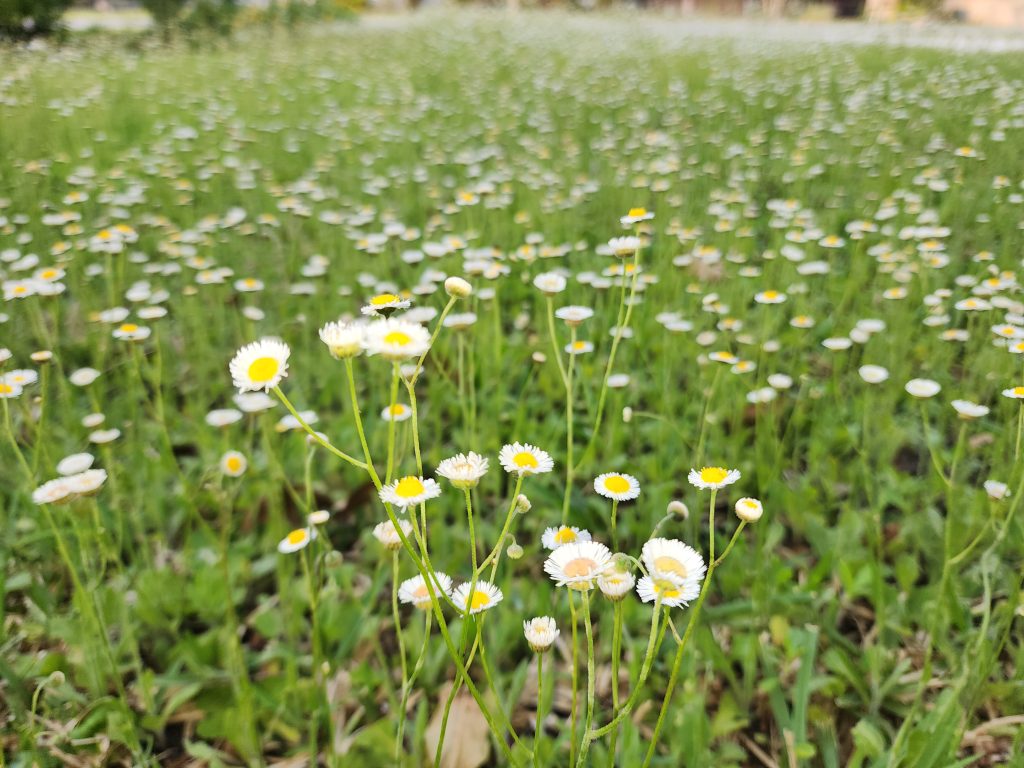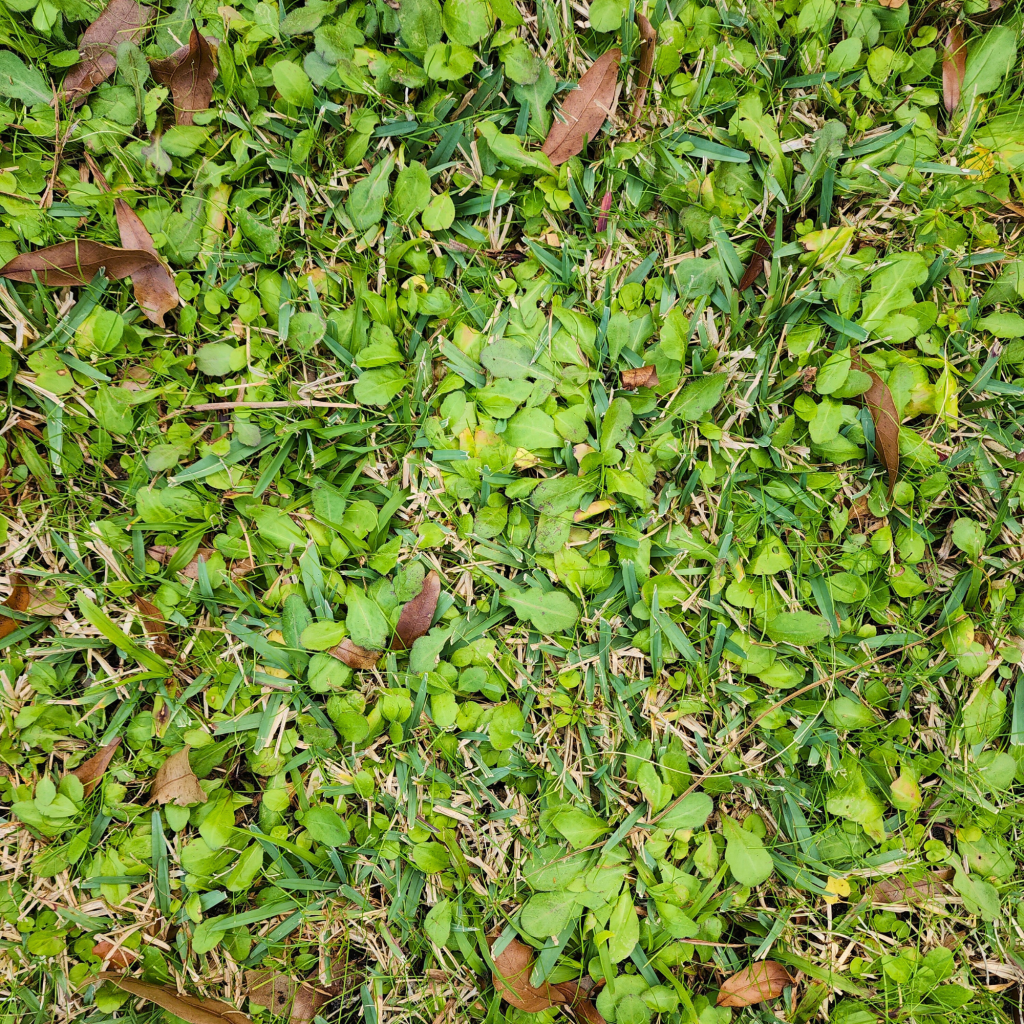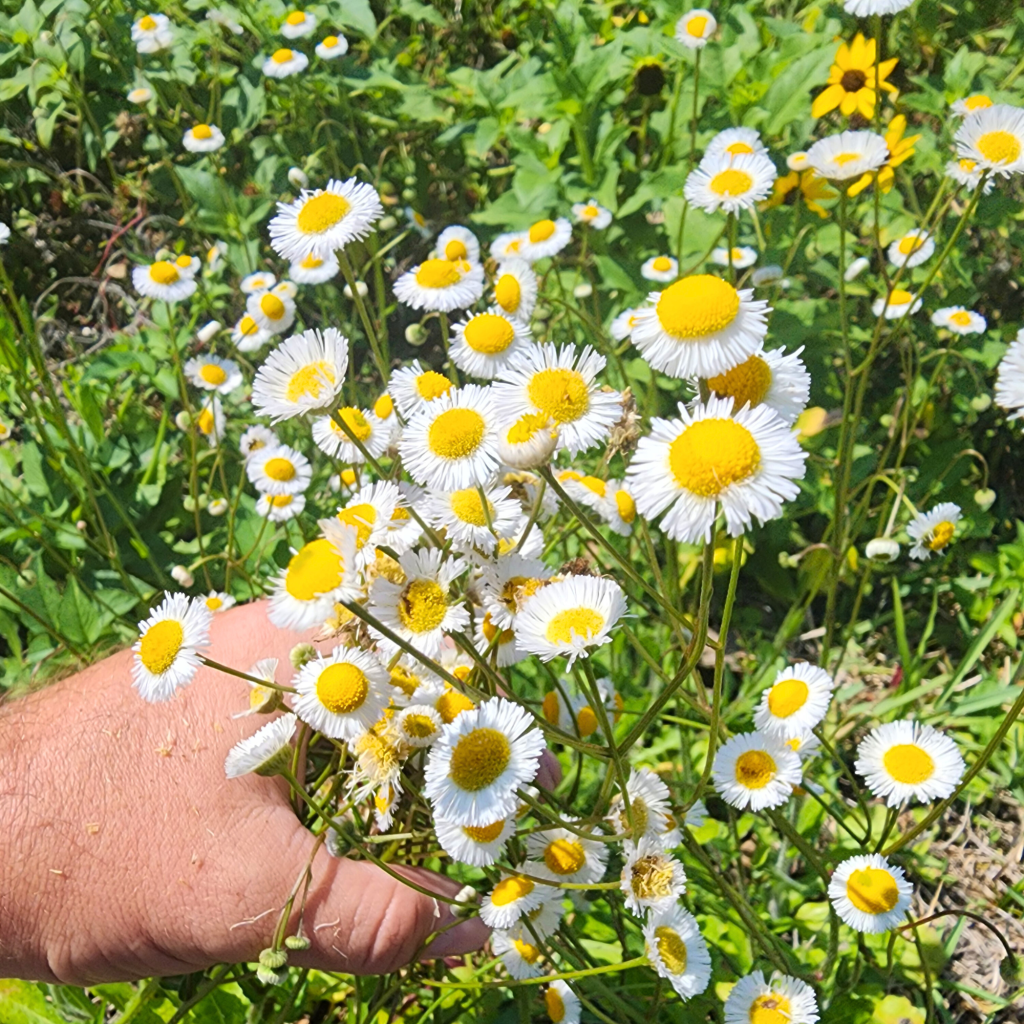A handful of the “lawn ornaments” that will be featured in this blog series. Top row (left to right): sunshine powderpuff, perennial peanut, frogfruit, and daisy fleabane. Bottom row (left to right): manyflower pennywort, bay lobelia, Florida snow, and blue-eyed grass.
Welcome to our Lawn Ornament blog series, where we explore the plethora of micro-plants that can help create a biodiverse, predominantly green, yet also delightfully colorful lawn that requires much less maintenance than a traditional grass lawn.
Many homeowners find it difficult and costly to maintain a “traditional” lawn, one largely dominated by a single grass cultivar. Embracing a biodiverse landscape can ease the frustration and save money, with the added bonus of providing ecological benefits. This “Lawn Ornament” series will provide a road map to that goal. Along the way, we’ll showcase volunteer “weeds” and commercially available ground covers that can improve upon the biodiversity of our lawns. We will also offer you tips and techniques to adopt and embrace this biodiverse approach. Breaking free from tradition, we can transform yards and neighborhoods to vibrant, beautiful mixed-mowable ecosystems.
Make sure to check out the Starter Guide: Embracing Lawn Ornaments: A Starter Guide
This plant is one that peaks in spring and is a prime example of the importance of No Mow March.
Daisy Fleabane

With the advent of spring, Florida naturally unfolds its vibrant tapestry of wildflowers. Among these enchanting flowers, one often overlooked gem stands out: daisy fleabane (Erigeron quercifolius). Despite its unassuming name, daisy fleabane carries a rich history and a plethora of benefits, making it a noteworthy addition to any landscape. This plant is also called mitebane, oakleaf fleabane, and Southern fleabane.
A Natural Insect Repellent?
Daisy fleabane, like its name suggests, has a historical association with repelling insects. In times past, people utilized its aromatic properties to ward off pesky insects by hanging it from the eaves of their houses, stuffing it into pillows and mattresses, or even burning it. While the efficacy of these methods might be understudied, there’s evidence suggesting that birds seek out and incorporate Fleabane into their nests, perhaps to protect their vulnerable offspring from parasites. This intriguing relationship hints at the plant’s potential insect-repellent properties.
Ideal Growing Conditions

Daisy fleabane thrives in disturbed areas, particularly those that are regularly mowed and have slightly moist soil. Its adaptable nature allows it to flourish in both partial shade and full sun, making it a versatile addition to various landscapes. Its ability to colonize disturbed spaces makes it a valuable asset in rewilding efforts and natural landscaping.
Burst of Blooms
One of the most captivating features of daisy fleabane is its explosion of blooms in the spring. Each flower is remarkably dainty, delicate, and beautiful, especially when massed together in a patch of wildflowers. Beyond its aesthetic appeal, these blooms serve as a vital food source for pollinators, contributing to the ecological balance of the surrounding environment.
Promoting Growth Through ‘No Mow March’
To encourage the proliferation of daisy fleabane and other wildflowers, individuals can participate in initiatives like ‘No Mow March‘ By refraining from mowing until the plants have finished reseeding, gardener’s can witness their patch of flowers grow exponentially. Additionally, disturbing the grass and soil around the patch can further promote seed germination and root development, enhancing the success of reseeding efforts.
Embrace Daisy Fleabane in Your Landscape

As we contemplate the beauty and benefits of daisy fleabane, it’s worth considering its role as a potential ‘Lawn Ornament.’ Instead of traditional grass lawns, why not incorporate patches of native wildflowers like Daisy Fleabane into our landscapes? Not only does this add visual interest, but it also supports local biodiversity and reduces the need for intensive lawn maintenance.
Cultivating Beauty and Biodiversity
In a world where natural spaces are increasingly rare, embracing native wildflowers like daisy fleabane becomes imperative. By understanding its historical significance, preferred growing conditions, and ecological benefits, we can foster a deeper appreciation for this charming spring wildflower. Do you still believe it is a weed compared to non-native ecologically unimportant turfgrass? As you plan your landscape for the upcoming season, consider adding a touch of daisy fleabane’s beauty and promoting its spread in your community if you do not already have it.
Resources
- Florida Native Plant Society on daisy fleabane: https://www.fnps.org/plant/erigeron-quercifolius
- Florida Wildflower Foundation on daisy fleabane: https://www.flawildflowers.org/flower-friday-erigeron-quercifolius/
- USF Atlas of Florida Plants on daisy fleabane: https://florida.plantatlas.usf.edu/plant.aspx?id=1019
During the preparation of this work, the author used ChatGPT to help build the blog post. After using this tool/service, the author reviewed and edited the content, and takes full responsibility for the content of the publication.
 4
4

